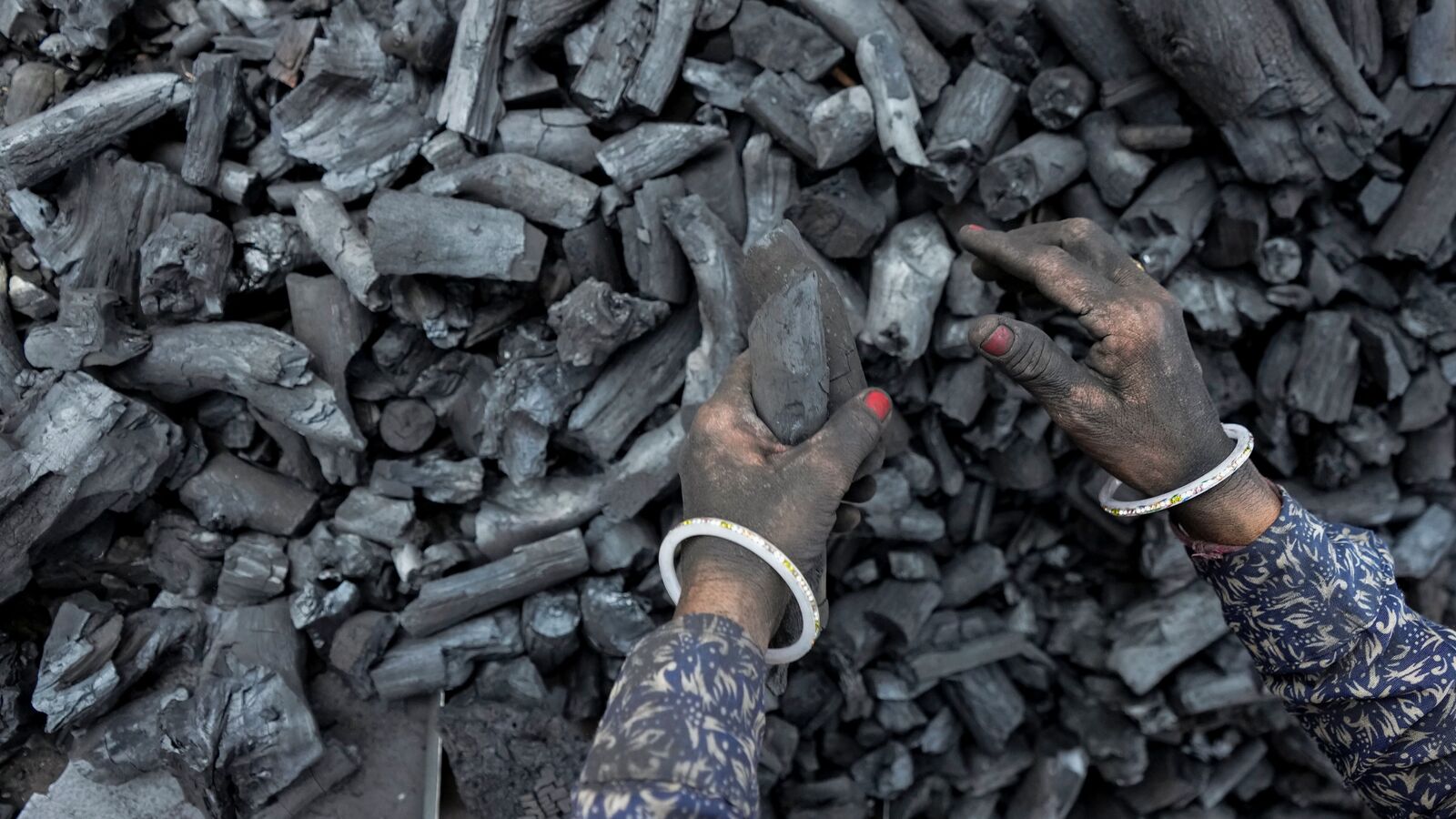In the dynamic landscape of India’s economy, efficiency and profitability take center stage. Upon delving into this realm, one cannot help but notice a lineup of corporate giants like Tata Consultancy Services, Hindustan Unilever Ltd, Nestle India, and Colgate-Palmolive (India) Ltd, all renowned for their impressive profit margins. Yet, an intriguing entry makes its mark in this list—Coal India Ltd., a significant player in a sector often deemed a sunset industry.
Coal, once the cornerstone of India’s energy infrastructure, finds itself grappling with a declining demand attributed to a confluence of environmental concerns, economic shifts, and technological advancements. The international movement towards greener energy solutions aims to mitigate climate change impacts, resulting in heightened scrutiny on coal consumption.
As a signatory to global climate accords, India is championing renewable energy alternatives, notably solar and wind power. These clean technologies have not only emerged as economically viable alternatives but have also started to overshadow coal’s traditional advantages.
The increasing mandates for stricter environmental regulations, along with the public health risks associated with coal-induced pollution, have hastened the transition from fossil fuels. With stakeholders advocating for sustainable energy initiatives, coal projects have witnessed a dip in financial backing. Although coal remains a critical component of India’s energy mix, its future seems veiled in uncertainty.
The Complexity of Green Transition
The prolonged global challenge of transitioning to renewable energy has highlighted the intricacies involved. While essential for combating climate change, developing green energy infrastructure proves to be a costly and complex endeavor. Renewable sources such as solar and wind face hurdles like unpredictability and necessitate significant investments in energy storage and grid enhancements.
Particularly for developing nations like India, the quest for rare earth minerals compounds the difficulty of this transition. As a result, several governments, including India’s, are revisiting coal energy to satisfy their energy requirements. Its reliability, accessibility, and relative cost-effectiveness make coal an attractive option to meet immediate power demands, especially in light of recent energy crises and disruptions in supply chains.
A notable public sector unit (PSU) has skillfully capitalized on this shift. Traditionally, the narrative favoring the private sector’s efficiency predominated; however, this PSU, Coal India Ltd, now stands shoulder to shoulder with esteemed private counterparts in India’s efficiency rankings.
Coal India Ltd: The King of Coal
Coal India Ltd operates primarily in mining and coal production, along with coal washing operations. Its primary clientele includes the power and steel sectors, alongside businesses engaged in cement production, fertilizer manufacturing, and brick kilns.
As a Maharatna company, Coal India enjoys substantial autonomy, enabling it to invest up to 15% of its net worth in private endeavors without prior governmental consent. As the world’s largest coal-producing entity and a leading corporate employer, Coal India has a substantial footprint across eight Indian states and has even reinforced its international presence by owning a subsidiary in Mozambique, Coal India Africana Limitada, which is set to commence operations soon.
The Monopolistic Dominance
Pervading the nation’s coal supply, Coal India Ltd commands over 80% of India’s total coal production. Its contributions to the power sector are equally commanding, exceeding 80% of its dispatches.
Coal India’s diverse product lineup includes coking coal, semi-coking coal, non-coking coal, and a range of washed and value-added products. Recent expansions have ramped up its production capabilities significantly, with the firm operating more than 313 mines across its subsidiaries and generating over 770 million tonnes of coal.
Moreover, Coal India manages 13 coal washing facilities with a capacity to process nearly 25 million tonnes of coal annually, predominantly focusing on coking coal to meet domestic demand and minimize imports.
The company’s capital expenditure reflects its commitment to growth, soaring from ₹7,311 crore in FY19 to ₹23,475 crore in FY24—an over 220% increase—in a determined effort to achieve a production target of one billion tonnes by FY26, a substantial jump from 600 million tonnes in FY19.
Financial Performance: A Profit Powerhouse
I recently conducted a thorough analysis of corporations recognized for their consistent profitability and discovered that Coal India Ltd ranks impressively as the fourth highest by return on capital employed (ROCE). ROCE serves as a crucial gauge, illustrating how effectively a company utilizes invested capital to drive profit.
Currently, Coal India boasts an ROCE of approximately 64%. In contrast, the industry median hovers around 19%, signifying Coal India’s exceptional operational efficiency. Its nearest competitor, Vedanta Ltd, records a ROCE of 21%.
Over the past decade, Coal India’s impressive 10-year average ROCE stands at 62%, affirming its sustainability as an efficient capital user. With a market cap of ₹3.06 trillion, the company has exhibited compound annual sales growth of 16% during the last three years and 7% across five years.
Furthermore, earnings before interest, taxes, depreciation, and amortization (EBITDA) rose significantly from ₹25,007 crore in March 2019 to ₹47,971 crore in March 2024, representing a compounded annual growth rate of 14%. Profit after tax reached ₹37,369 crore in FY24, growing at a rate of 8% over five years. Notably, Coal India’s stock price stands at ₹497, amassing a remarkable 169% growth over the last five years.
Undervalued Yet Promising
Currently trading at a price-to-earnings (P/E) multiple of 8x, Coal India’s valuation resonates with its historical averages. However, its relatively low P/E in comparison to industry peers—about one-third of the average P/E ratio of 22x—underscores a potentially undervalued stock, reflecting market skepticism regarding its long-term prospects amidst coal’s declining demand.
The chairman, P M Prasad, underscored an encouraging performance in the company’s annual report, hinting at high aspirations for future achievements. Despite an FY24 capital expenditure target of ₹16,500 crore, the actual investment reached ₹23,475 crore—42% above plans and 26% higher than the previous year—highlighting Coal India’s efficiency in generating returns from capital expenditures.
Significantly, institutional investors, including major entities like Life Insurance Corporation of India, HDFC Balanced Advantage Fund, and Parag Parikh Flexi Cap Fund have expressed confidence in Coal India by accumulating shares. This bullish sentiment stems from the company’s robust fundamentals and its promising prospects.
Embracing Sustainability: Green Initiatives
In anticipation of a potential decline in coal demand, Coal India is striving to lead in green energy initiatives. The company has ambitious plans to attain 3GW of solar power capacity by FY26 and 5GW by FY29, reflecting a proactive shift towards sustainability.
Additionally, Coal India has earmarked almost ₹16,000 crore for the development of a thermal power plant in Sundargarh, Odisha, representing a crucial avenue for forward integration. The adoption of coal gasification projects under the company’s coal-to-chemical vertical indicates its commitment to evolving energy solutions. Collaborative ventures with BHEL and GAIL for projects in Odisha and West Bengal reveal strategic partnerships poised for the future.
Conclusion: A Compelling Future
Coal India Ltd’s remarkable performance indicators, particularly in ROCE, position it as a dominant player in a sector often perceived as dwindling. Its stock, nearing all-time highs, coupled with one of the highest dividend yields in the large-cap arena, makes it a noteworthy entity in the investment landscape.
With a financially disciplined approach and a robust medium-term demand outlook, tracking Coal India’s trajectory appears prudent. Moreover, its strategic investments aimed at charting a post-coal future warrant close attention as the company continues to adapt to evolving energy paradigms.
As a final note, it is essential to acknowledge that the insights presented herein are for informational purposes. Prospective investors should consult with advisors before making investment decisions.











